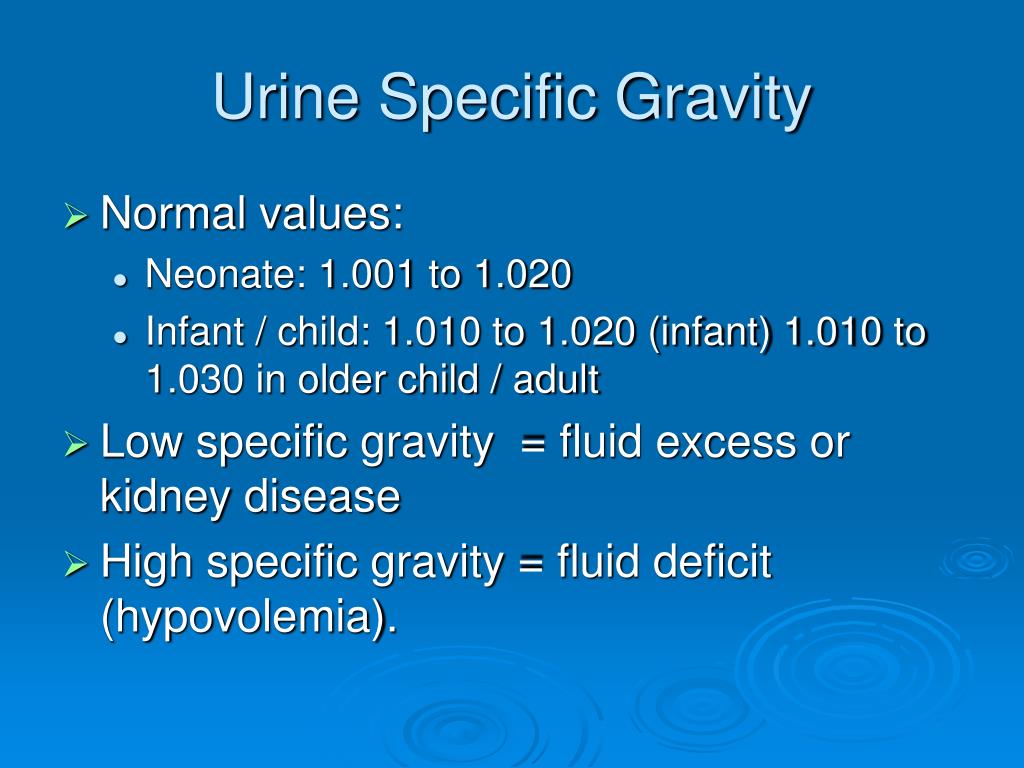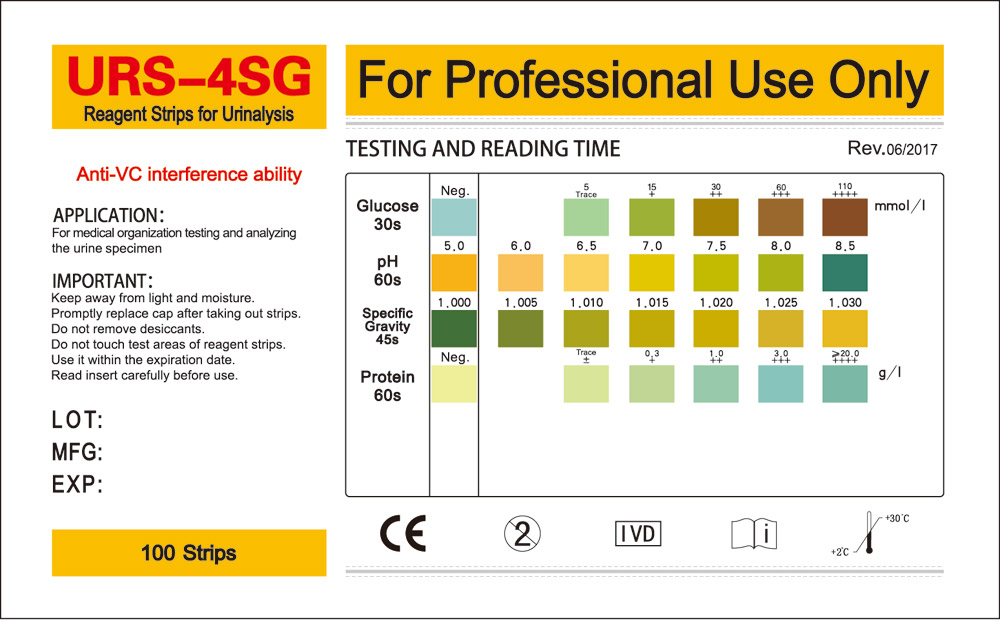

Ua specific gravity free#
1 Free hemoglobin indicates RBC rupture due to trauma or hemolysis from dilute urine. In hemoglobinuria, the serum will be pink or red in myoglobinuria, the serum is clear. Most test strips cannot differentiate among RBCs, hemoglobin, and myoglobin thus, some care should be taken in interpretation. Many experts believe that without additional evidence of UTI, microscopic exam and/or urine culture need not be done to rule out significant bacteriuria.īlood: A sign of damage to the kidney or the urinary tract, hematuria is seen in renal disorders, infectious disease, neoplasms, eclampsia, systemic lupus erythematosus, sickle cell nephropathy, cirrhosis, or urinary tract trauma. 1 A negative leukocyte esterase test means that infection is unlikely. Thus, leukocyte esterase testing for UTI has a better positive predictive value for bacteriuria when considered with nitrite testing. 5 Testing may be negative in infection because not all patients have significant pyuria (>5 WBCs/high-power field on microscopic examination of centrifuged urine sediment1). Leukocyte esterase: The presence of leukocyte esterase, which is produced by neutrophils, has a sensitivity around 75%-95% and a specificity around 65%-95%. Bacteria without reductases (e.g., enterococci, Streptococcus faecalis) cannot be detected by nitrite testing. Common organisms, including species of Citrobacter, Escherichia, Pseudomonas, Klebsiella, and Proteus, as well as most Enterobacteriaceae (90%), contain enzymes that reduce urinary nitrates to nitrites. Thus, it is helpful when positive, but a negative test does not rule out UTI. This test is very specific but not very sensitive. Nitrites: A positive nitrite test indicates that bacteria may be present in significant numbers. Proteinuria may be continuous or intermittent the latter is more likely caused by physiologic or functional disorders (postural proteinuria, fever, excessive exercise, or emotional stress) than by renal conditions. Specific tests are needed to quantitate and identify different proteins, including fibrinogen, nucleoproteins, or Bence Jones proteins. WBC or RBC casts in the urine can yield a positive protein test. 1 Proteinuria may also indicate heart failure, gout, infection, or nephrotoxic drugs. Excretion of >150 mg of protein per day (10-20 mg/dL) is defined as proteinuria and is the hallmark of renal disease. Dipsticks are most sensitive to albumin and do not detect immunoglobulin light chains or Bence Jones protein. Trace amounts of other proteins may also be found.

Proteins: The major protein found in urine is globulin, followed by albumin. Uncontrolled diabetes mellitus is the most common cause, but other causes include vomiting, diarrhea, acute fever, carbohydrate-free diets, starvation and cachexia, or eclampsia. This most often occurs when fat metabolism is stimulated by inadequate carbohydrate intake or a carbohydrate-metabolism defect. Ketones: Ketonuria results when excessive circulating intermediary products of fat metabolism appear in the blood. Dipsticks using the glucose oxidase reaction can miss other sugars. Other signs of proximal dysfunction are often seen, including hypophosphatemia, hypouricemia, renal tubular acidosis, and aminoaciduria.

Renal glycosuria is the rare result of a decreased renal threshold for glucose. Other causes include hemochromatosis, hyperthyroidism, Cushing syndrome, steroid therapy, or sudden shock.

Diabetes mellitus is the major pathologic cause. 3 Benign glycosuria may result from a heavy meal or stress. Glucose: Less than 0.1% of glucose filtered by the renal glomerulus appears in urine the rest is reabsorbed in the proximal tubule until the plasma glucose rises. A low specific gravity may indicate diabetes insipidus, glomerulonephritis, pyelonephritis, or other anomalies that reflect an inability to concentrate urine. A high specific gravity is also seen in shock, nephrotic syndrome, dehydration, acute glomerulonephritis, heart failure, or liver failure. A value >1.035-1.040 suggests possible contamination, very high levels of glucose, or recently received low-molecular-weight dextran or high-density radiopaque dyes. Acid urine (pH 1.025 indicates normal concentrating ability. An alkaline pH may also indicate a systemic metabolic or respiratory alkalosis. Infection with any pathogen that produces urease, e.g., Proteus mirabilis and Pseudomonas, can result in a pH >7.0-7.5. Urinary pH: The body’s ability to maintain normal acid-base balance is reflected in the urinary pH, typically 5.5-6.5 (normal range: 4.5-8).


 0 kommentar(er)
0 kommentar(er)
